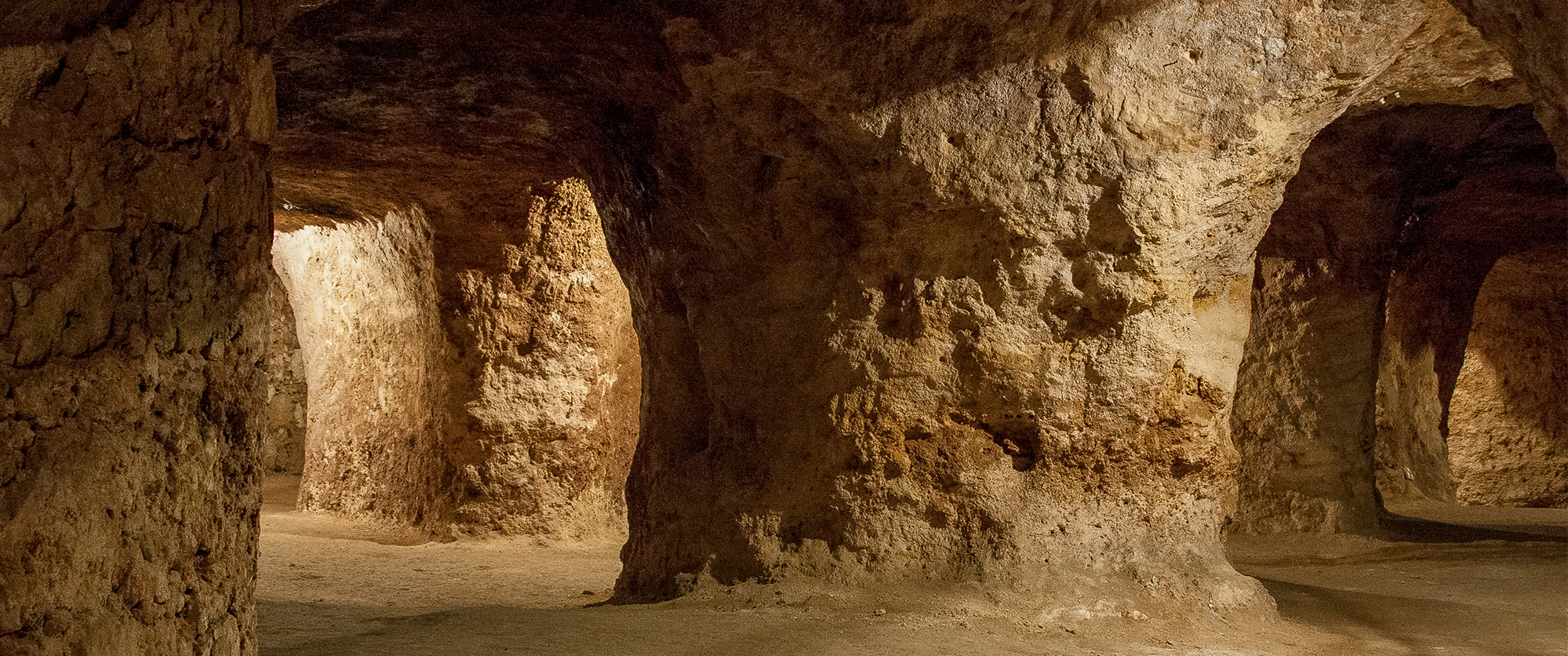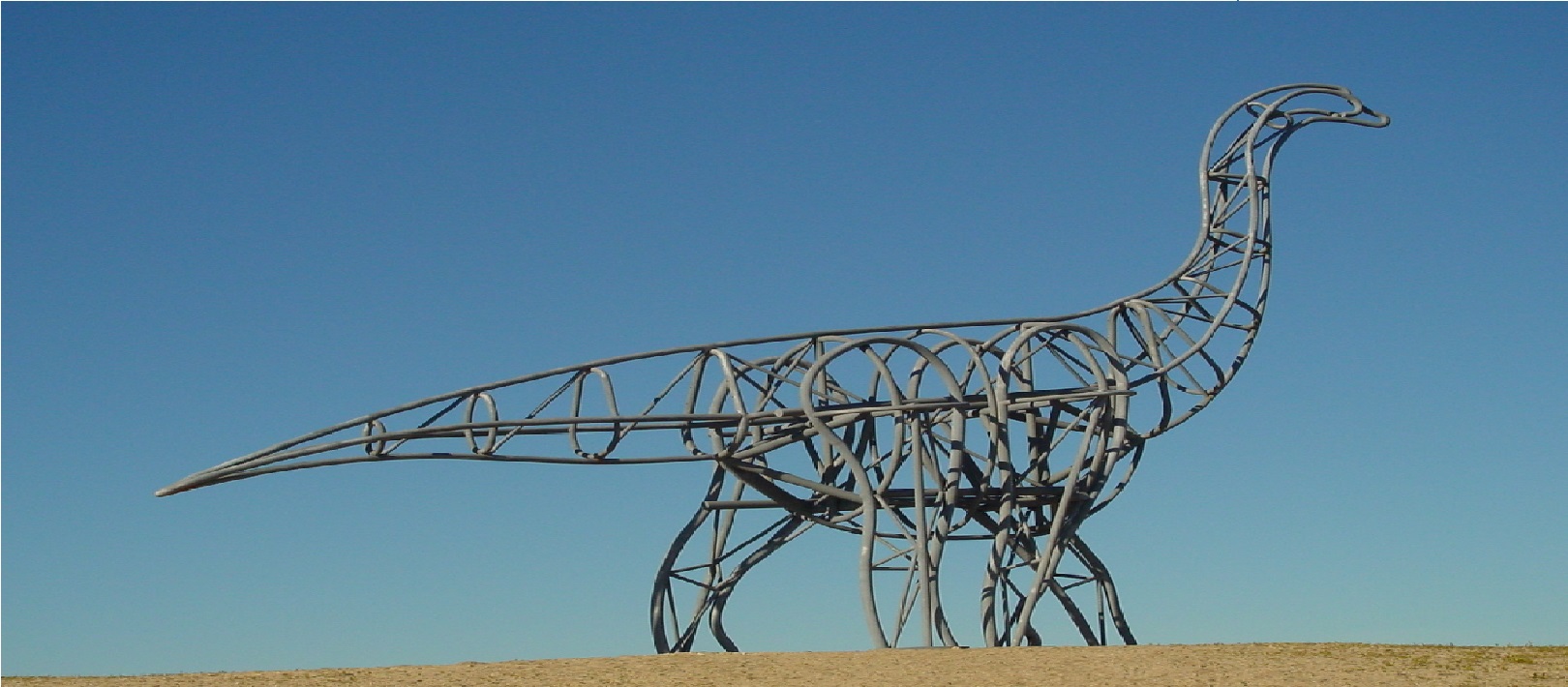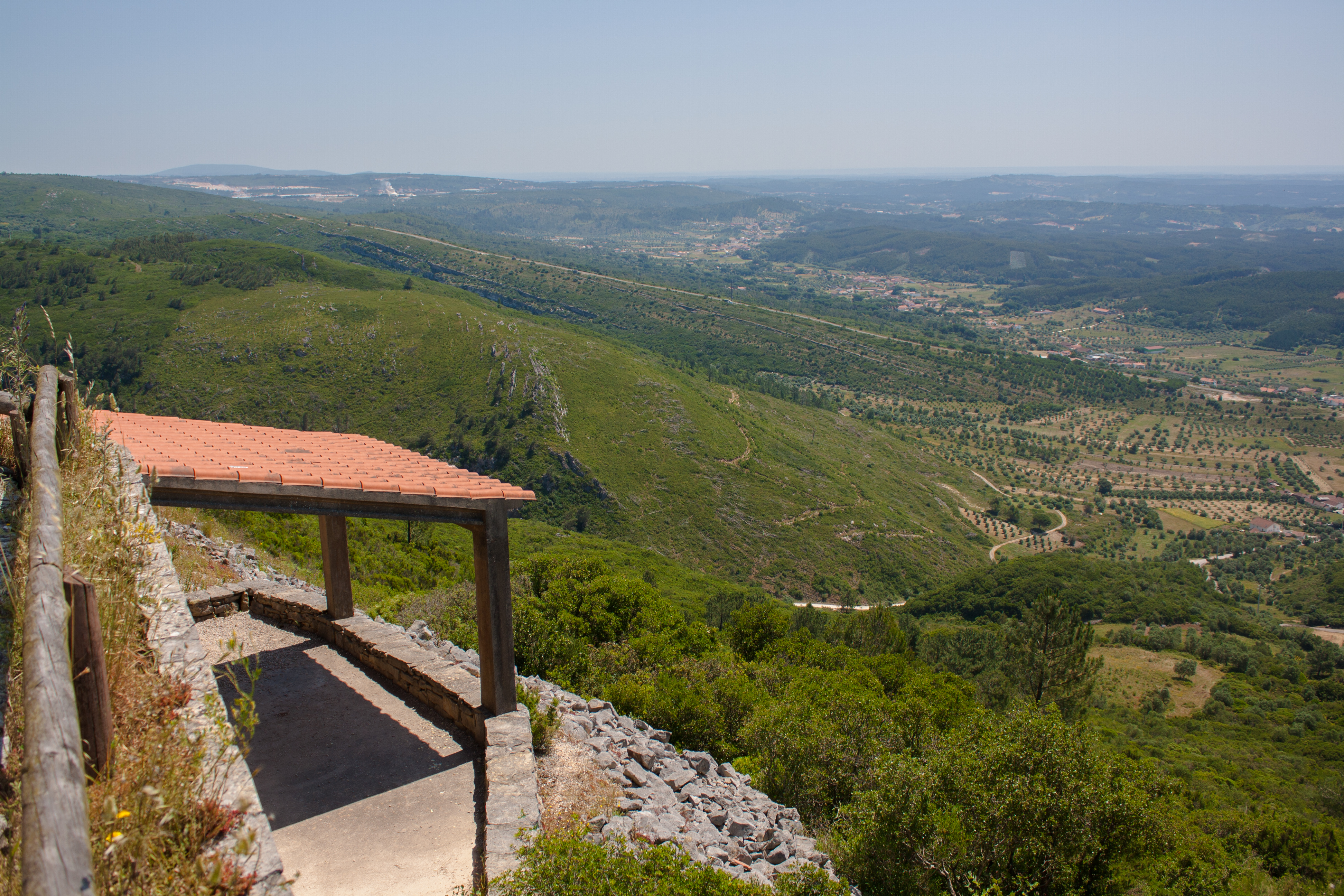The Caves of Coin Scientific and environmental interpretation Centre (CICA gm) is characterized by being an informative, didactic and scientific space. It is a place where students, tourists and public in general can find answers to the mul ...
Interactive Exhibit, Alcanena
The CARSOSCÓPIO - Alviela Ciência Viva Centre is an interactive facility built on promoting science and technology revolving around three interactive exhibits that basically discuss the local Limestone Geological Plates, their origins and the region's 175 million year old geological evolution. Some of the other topics that this institution presents are the local weather influences on landscape and geological formations, the amazing secrets behind the one of a kind Alviela River Spring, the unique characteristics of the region’s cave bats as well as other astounding curiosities regarding local animal wildlife. GEÓDROMO - A virtual reality simulator takes visitors back on an extraordinary journey of 175 million years in order to observe the creation and evolution of the Local Limestone Plates (the country’s most important karst region) where the karsic phenomena play an important role in the local fauna and flora’s enormous and rich diversity. The presentation begins in the dinosaur era, showing how the prehistoric marine environment played an important role in the formation of today’s limestone plates. While in the earth’s orbit, visitors can witness how the Pangaea continent separated and the first tectonic shifts during the Cretaceous Period. As time speeds up, it’s possible to rapidly view and comprehend the different phenomena responsible for the changes in the earth’s landscape. Some of these examples are the meteor impact that formed the Thor Crater as well as Wurn – the last Great Glacial Period. In real time footage it’s possible to overfly the limestone region and literally dive into the depths of the earth entering and exploring hidden and mysterious underground caves and galleries that lead water all the way to the Alviela River Spring. CARSO - This fun and enjoyable 3D film helps visitors comprehend how climate issues interfere with the natural mechanics of the country’s most important karsic water spring. People learn about the process undergone by rain water from the point it infiltrates the region’s 180km2 water basin area until it reaches the surface once again and the Amiais stream’s water course as well as all the related geological phenomena. After viewing the film, visitors are accompanied to an interactive prototype module enabling visitors to simulate local rainfall, rainwater infiltration and conduction from the basin to the spring. Here visitors understand how the river flow works and the reason why this location constitutes the country’s most important underground water reservoir. QUIROPTÁRIO - An exhibit entirely dedicated to the Chiroptera theme employs different interactive modules to reveal unique and important features of bat morphology and ecology (as well as other cave dwelling creatures in general) since the Lapa da Canada Cave located near the water spring is an important breeding sanctuary for these intriguing mammals due to its unique geophysical characteristics. This complex system of dark underground galleries provides the ideal environmental conditions such as light, temperature and humidity, for breeding that occurs between April and September of every year. Twelve different bat species temporarily inhabit these caves and are closely observed live by a custom built video surveillance system (the Bat Cave Observatory). Along the Quiroptario’s interactive exhibit visitors can enjoy a fun and delightful range of different modules in relation to these captivating little creatures. Visitors can witness live footage taken, thus helping discover and demystify ancient legends and myths regarding these mammals; experience what it feels like to hang upside-down like a bat or travel only with the use of sound and radar or even share a minute space with a thousand other companions.
CHARACTERISTICS
City: Alcanena
Postal Code: 2380 - 450
Telephone: 249881805
Email: info@alviela.cienciaviva.pt
Website: http://www.alviela.cienciaviva.pt
tuesday, wednesday, thursday, friday
From 00:00:00 to -.
From 18:00:00 to -.
Weekend and Holidays Schedule:
From 10:00:00 to 00:00:00.
From 00:00:00 to 18:00:00.
Exceptions:
From may 1st to september 30th Tue-Fri 10:00am - 06:00pm Sat | Sun | Hol 11:00am - 07:00pm
Paid Entry:
4.5€
Discount Policy:
ENTRANCE Children (to the age of 5, inclusive) - Free Student - € 2,50 Adult - € 4,50 Senior - € 2,50 Family ticket (until 2 children under 17 years old) - € 10,50 DISCOUNTS GROUPS (minimum 10 people) Students - € 2,00 Adults - € 3,50 Seniors - € 2,00 REGULAR TICKET Teachers| Educators - 50% Journalists - 50% People with special needs - 50%
Specific Conditions:
The visit includes the three permanent exhibits (Geódromo, Carso and Quiroptário).
Method:
On foot
Difficulty Level:
Low
Group Visits:
Yes
Minimum Number of Person per group:
15
Maximum Number of Person per group:
240
Observations:
Prior booking required
Guided Tours:
Yes
Observations:
For organized groups prior booking is necessary. For individual visitation booking is not necessary.
Officially opened to the public on December 15th, 2007, by the President of the Portuguese Republic and the Portuguese Minister of Science, Technology and Education, the CCVAlviela's facilities already existed, as Interpretation Centre of the Alviela River Spring, in result of an ecotourism project that was implemented in this area by the Alcanena Town Hall in the mid 1990's.
Activity Program:
-
Study and Research Unit:
Last generation technical means, suitable for holding speleonautic exploration, acquired during the development of Geódromo movie, are nowadays indispensable tools for a deeper understanding of the Alviela river spring. The difficulty of observing and studying cave bats in their natural habitat makes the Bat Cave Observatory an essential tool in the study and investigation of these animals.
Audiovisual and Multimedia Resources:
-
Volunteering Programs:
-
Activities for schools
Target Audience:
Schools
Activity Cost:
1.5€
Weekly Schedule:
tuesday, wednesday, thursday, friday
From 10:00:00 to 00:00:00.
From 00:00:00 to 18:00:00.
Weekend and Holidays Schedule:
From 00:00:00 to 00:00:00.
From 00:00:00 to 00:00:00.
Exceptions:
The Alviela Ciência Viva Centre closes on January the 1st, Easter Sunday, December the 24th, 25th and the 31st.
Observations:
-
http://cm-alcanena.pt/index.php/pt/visitar-2/ondedormir
Cultural Facilities
http://cm-alcanena.pt/index.php/pt/visitar-2/oquevisitar/equipamentos-municipais
Security Forces
http://cm-alcanena.pt/index.php/pt/viver/saude/agrupamento-de-centros-de-saude-do-medio-tejo
Security Forces
http://cm-alcanena.pt/index.php/pt/viver/protecaocivilseguranca/contactos-de-emergencia
Where to Eat
http://cm-alcanena.pt/index.php/pt/visitar-2/ondecomer
Táxi
Agency Name:
Praça de Táxis Alcanena
Telephone Number:
249882494
Parking for private vehicles:
Yes
The Santa Marta Hill is a natural viewpoint from which it’s possible to observe a vast area leading to the Lezirias do Tejo. This beautiful place has a picnic area for visitors (text from the Town Hall of Alcanena website).
gps: 39.492706 -8.667569
distance: 13km
The Serra de Santo António/Minde Viewpoint
In this location it’s possible to observe magnificent and breathtaking landscapes: to the north mountains, plateaus, the Minde Polje (also known as the Minde Lagoon); to the south a vision of a vast plain landscape that stretches all the way to the Tagus River and the city of Santarém.
gps: 39.5156 -8.72924
distance: 15km
The Paúl do Boquilobo Natural Reserve
An area of rich and distinct avicular fauna, The Paúl do Boquilobo Natural Reserve was created in 1980 and is included in the World Network of Biosphere Reserves in UNESCO’s Man and the Biosphere Programme as well as in the Special Protection for Avifauna Zone.
gps: 39.408136 -8.529919
distance: 25km
St. Peter’s Church (Alcanena)
The ancient Parish Church was destroyed by a fire accident, currently only the Mother Church with revivalist characteristics exists. This church first opened to the public on July the 17th 1921.
gps: 39.459125 -8.66865
distance: 7km
Our Lady of Grace Catholic Church (Bugalhos)
The Bugalhos Mother Church is an important historic time mark with 15th, 17th and 18th century decoration.
gps: 39.445025 -8.647383
distance: 11km
The Espinheiro Rural and Ethnographic Museum
The Rural and Ethnographic Museum has a vast estate of copies as well as authentic examples of tradition attire,l domestic objects and agricultural tools.
gps: 39.419581 -8.738836
distance: 8km
The Vale Arch (Louriceira)
The Vale Arch is an important master piece of art that witnessed the history of Lisbon’s water supply by the Alviela Aqueduct.
gps: 39.415058 -8.65845
distance: 10km
The Louriceira Mother Church
Louriceira’s Mother Church was built in 1511 and is of great importance not only because of its history but also because of its unique architecture. It was also recently classified a being real estate of public interest.
gps: 39.427581 -8.670089
distance: 8km
The Malhou Parish Church
Malhou’s Parish Church is a place of great beauty, with 16th and 17th century decoration.
gps: 39.426847 -8.685325
distance: 7km
Windmills (Malhou)
Windmills are a unique characteristic that mark the Aire and Candeeiros Mountains.
gps: 39.410664 -8.704678
distance: 9km
The Roque Gameiro Aquarelle Museum (Minde)
The creation of a museum totally dedicated to Alfredo Roque Gameiro’s art work was undergone by the initiative of family and friends, admirers of this master’s of Portuguese Aquarelle art. It first opened to the public on November 1970 and was temporarily installed in his parent’s home. Now a day the museum has its own programme that follows the logic of rotating pieces of the permanent exhibit, offering cycles of temporary exhibits.
gps: 39.514928 -8.689019
distance: 14km
The Torres Novas Castle
A 12th century arab fortress, Torres Nova’s Castle, conquered in 1190 by D. Sancho I symbolizes this cities’ political importance in the medieval epoch (In Guia do Concelho de Torres Novas).
gps: 39.479336 -8.540167
distance: 23km
Villa Cardillio Roman Ruins
Located 2km from the city of Torres Novas, this roman archeological station is the main proof of roman presence in this town district.
gps: 39.452947 -8.528883
distance: 25km
The Lapas Caves
Just 2km away from the city of Torres Novas, right underneath typical village houses and streets lays a labyrinth of galleries dug into the rock. These underground caves (that gave this village its name) are a series of underground tunnels that were classified as Property of Public Interest since 1943.
gps: 39.492922 -8.553853
distance: 25km
The Almonda Caves
The cave that shelters the Almonda water spring is considered being the longest karsic network of galleries, known in Portugal, extending over more than 10 kms.
gps: 39.504842 -8.615342
distance: 13km
The Mira de Aire Caves
Discovered in 1947, these caves were the first to be found in the Serras de Aire e Candeeiros Natural Park, a region of the Limestone Plates rich in geomorphologic formations of the typical Karst.
gps: 39.540167 -8.704003
distance: 18km
The Moeda Caves
The Moeda Caves are located in S.Mamede, town district of Batalha, only 2km away from Fátima. Its discovery happened in 1971, by two hunters that followed a fox that hid in a pothole in the woods.
gps: 39.624222 -8.704806
distance: 30km
Santo António Caves
In 1955 these caves were discovered and during the first years the visitation conditions were very poor, only officially opening to the public after undergoing rehabilitation works in 1971 by the Portuguese Tourism Secretary of State. (In http://www.grutassantoantonio.com)
gps: 39.537306 -8.742958
distance: 19km
The Sanctuary of Fátima
On May the 13th 1917, three children where shepherding sheep in the village of Cova de Iria – Fátima, town district of Vila Nova de Ourém, today’s Leira-Fátima archdiocese. They were 10 year old Lucia de Jesus, and 9 and 7 year old Francisco and Jacinta Marto her cousins. On that day, they were visited by a Lady, Our Lady, who asked to be built in that very place a chapel in her honor.
gps: 39.630531 -8.673642
distance: 28km
Pia do Urso Sensorial Park
The Pia do Urso is a rehabilitated space where a thematic/sensorial park (adapted for the blind) was built, also includes a walking trail. (In http://piadourso.com.sapo.pt)
gps: 39.597222 -8.716389
distance: 31km
The Jubileu 2000 Parish Complex – Alcanena
The Jubileu 2000 Parish Complex was first opened to the public during the year 2000 and has many different infrastructures. Besides the Holy Mary, Mother of God Church, a beautiful example of modern religious architecture, this complex also has a funeral home, rooms for catechesis, a bar, etc.
gps: 39.461403 -8.668669
distance: 7km
The Coin Caves (Grutas da Moeda) are located in São Mamede, municipality of Batalha. Its discovery happened in 1971, as two huntsmen that were chasing a fox, saw it enter by one natural hole under the bushes. Moved by curiosity, they decide ...
The salt-pans can be found 3 km away from Rio Maior, in a valley at the bottom of Candeeiros Mountain. Surrounded by trees, vineyards and other cultivated lands, they are considered a natural wonder, once the sea is about 30 km away. The en ...
Lapas Caves are a network of artificial galleries developed beneath the houses of the village with the same name. This urban area has been raised in a small elevation corresponding to a fluvial terrace of Almonda river, from the Quaternary, ...
The paleontological site of the dinosaurs in Pedreira do Galinha, discovered in 1994, is located in Serra d''Aire. This deposit is one of the most important in the world record, presenting hundreds of sauropod footprints.
Distance: 4.5 km; Duration: 3h; Difficulty: Difficult. Location: Aldeia de Chãos Starting point: Cooperative Parking Terra Chã gps-wgs84 coordinates: 39.417998, -8.920365 The natural park of the Aire and Candeeiros mountains are the most i ...
Circular route starting and ending in the Municipal Park. Mixed floor type, 6 km predominantly on a bike path and about 3 km on a dirt track, from the Health Center to the Marinhas do Sal village. Arriving at the Salt Flats of Rio Maior, y ...
From the geological point of view, the saltworks are located in a diapiric valley. A diapir is a low density rock mass, relatively mobile, crossing other denser rocks. This vertical movement from bottom to top, is made along faults and allo ...





















